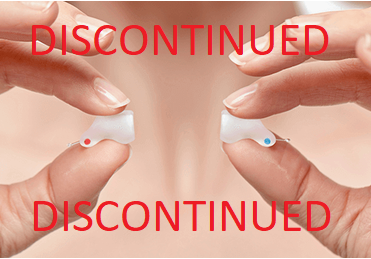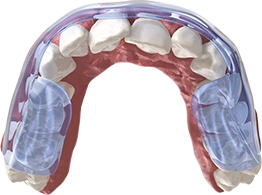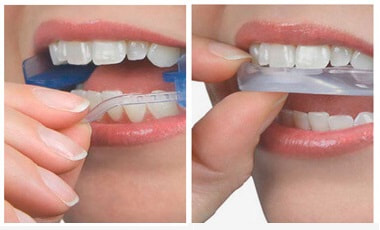Bruxism common treatments: |
|
For many years the only option to treat bruxism was the conventional mouth guard. Lately more new products are being introduced as bth4, Cerezen and BruxRelief to follow the SleepGuard headband!
|
BTH4 mouth guard |
Myostaeb EXPAIN change
|
AesyBite Active |
Cerezen earplugs - No longer available for purchase |
SleepGuard - headband |
BruxRelief |
aveoTSD |
Aqualizer |
Splints / mouth guards (prescribed) |
Splints / mouth guards (over the counter) |
NTI / Grindguard |
Masseter Reduction |
|
Surgical and Non-Surgical Masseter Reduction. Kind of similar to botox, where the debilitation of the muscle is the goal (a side benefit is a more trimmed, reshaped of lower face to the desired contours).
Pros
Cons
|
Taste feedback |
Botox |

There are multiple claims of bruxism event reduction by the use of botox injected to the jaw muscles. The muscle is weakened enough to stop involuntary grinding/clenching.
Pros
Cons
|
Nose plug |

By preventing the breathing through the nose the patient is forced to sleep with the mouth open.
Pros
|
Sleep monitoring App - Do I Snore or Grind (and other options) |
|
Multiple options are available using smartphones (tablets) to record your snoring and grinding sounds made during your sleep, you can listen to them next morning. You can choose if you want to record only snoring, grinding or both. The app filters and detect the teeth grinding and snoring sounds.
Pros
|
Intraoral electronic device |
|
The device senses the activity and gives electrical shocks to the user as feedback to stop bruxism.
Pros
|
Some of the Patent applications
Bruxism method and apparatus using electrical signals. US4934378 A |
|
ABSTRACT
The invention measures the electrical signals at the microvolt level emitted from the masseteric (jaw) muscle when bruxism occurs. The apparatus detects electrical signal impulses from electrodes on a transducer probe located within one of the patient's ear channels and transmits the detected signals to an amplifier. in one embodiment, a circuit converts the signal information into an audible tone. The tone provides the immediate knowledge of the bruxism which leads to controlling of the action. The apparatus may be worn inconspicuously during the day and without discomfort while asleep for sleep interruption feedback. ________________________________________ |
Apparatus for treating bruxism. US 6638241 B2
|
|
Apparatus for the treatment of bruxism, including a biosensor adapted to sense a phenomenon associated with a bruxing event, and a relaxation stimulator in communication with the biosensor and adapted to provide a relaxation stimulus to relax at least one of an obruxism muscle and an obruxism nerve.
|
• The information contained on this Web site does not constitute medical advice, nor is it a substitute for medical advice. Always consult with your doctor before starting any treatment.











